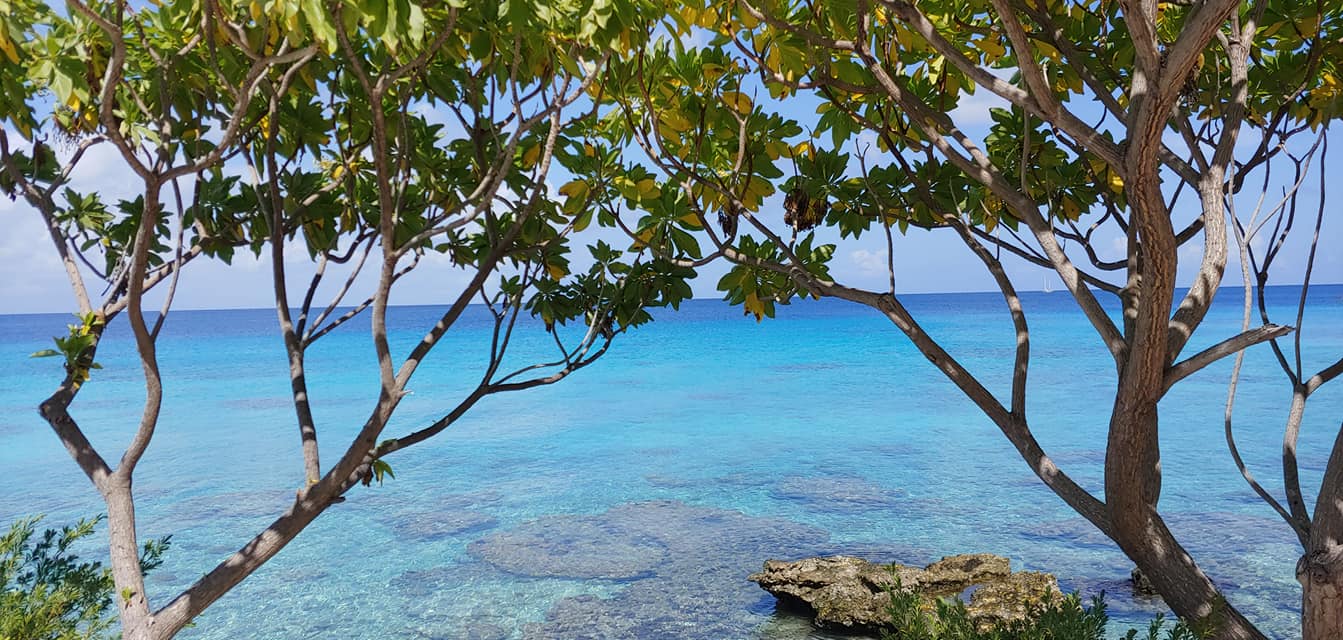 Vacation advisor and Tahiti Tiare Specialist Barbi Partlow shares her exploration of the mysterious Marquesas Islands.
Vacation advisor and Tahiti Tiare Specialist Barbi Partlow shares her exploration of the mysterious Marquesas Islands.
I have long held a passion for Tahiti and Her Islands. This spring, as a Tahiti Tiare Specialist I was invited by Tahiti Tourisme to learn more about the mysterious and seldom-visited Marquesas Islands – the trip of my dreams! I was about to embark on a life-changing trip into the past. Although I’d cruised twice in these Polynesian waters before, this voyage was going to be different…much different!
Sailing in French Polynesia
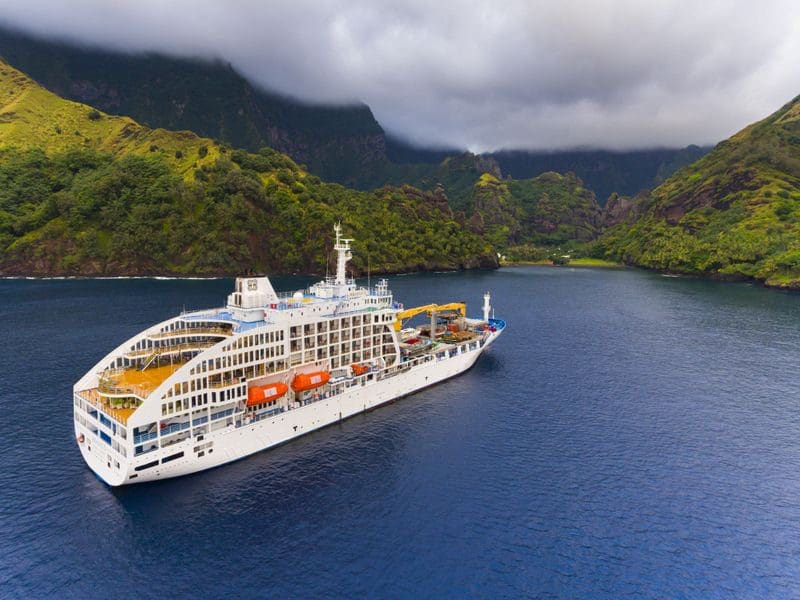
The Aranui company has been servicing the Marquesas Islands with freight deliveries since the end of World War II. The Aranui 5 is part cruise ship (200 passenger capacity) and part freighter/supply ship, bringing goods to and from the remote Marquesas and the Tuamotu Archipelago.
I boarded in Papeete, Tahiti, along with four other Tahiti Tiare Specialist agents, escorted by our Tahiti Tourisme representative. Multi-tasking crew members greeted us and escorted us to our cabins. My cabin was on Deck Five, which was convenient to the Lounge on the same level, dining one deck below, and Veranda Bar one deck above. Though square footage is small, cabins are quite efficient and comfortable with ample storage drawers and a small wardrobe. After the long trip from Virginia, I was ready for a nap, but it was so exciting to be aboard that rest would not come until a few hours later.
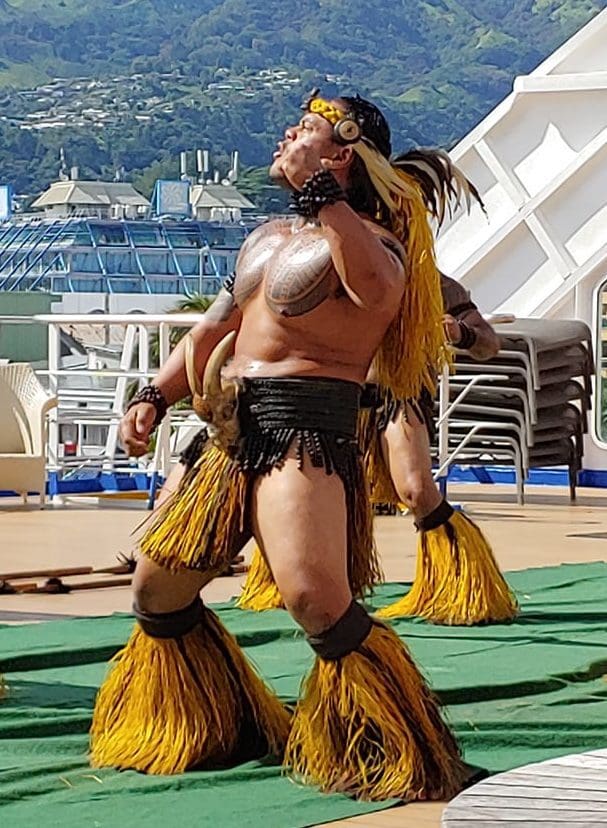
Before sailing, a Marquesan “Haka Dance” ceremony, complete with drummers, singers, and muscular male dancers covered in tribal tattoos introduced us to their cultural heritage. Warrior cries and simulated combat moves were meant to intimidate – and they did! The Marquesans are masters of dance, song, and merrymaking! After the show, we sailed from the harbor escorted by a tugboat. In the open waters, it was soon evident that the Aranui 5 did not have stabilization like most passenger cruise vessels, but since it is also a cargo ship it was a very different kind of ship. I enjoyed the pitch-and-roll motion; however, some more sensitive passengers soon became queasy.
It’s important to note that this cruise is not really geared for those with limited mobility, although there are elevators and one handicap-equipped cabin. Those who have reasonable mobility and a curiosity for culture, anthropology, history, or maritime transport will enjoy the ‘soft adventure’ focus of the Aranui’s itinerary. Passengers were of varied ages from Western Europe, Australia, Canada, Russia, and other countries.
Exploring the Marquesas Islands Past and Present
We had two full days at sea, one in the beginning and one at the end of the voyage. Onboard pursuits included relaxing or watching a movie, Ori Tahiti (Tahitian dance class), a palm frond weaving class, Poisson Cru (raw fish dish) demonstration, and sunning by the small onboard pool.
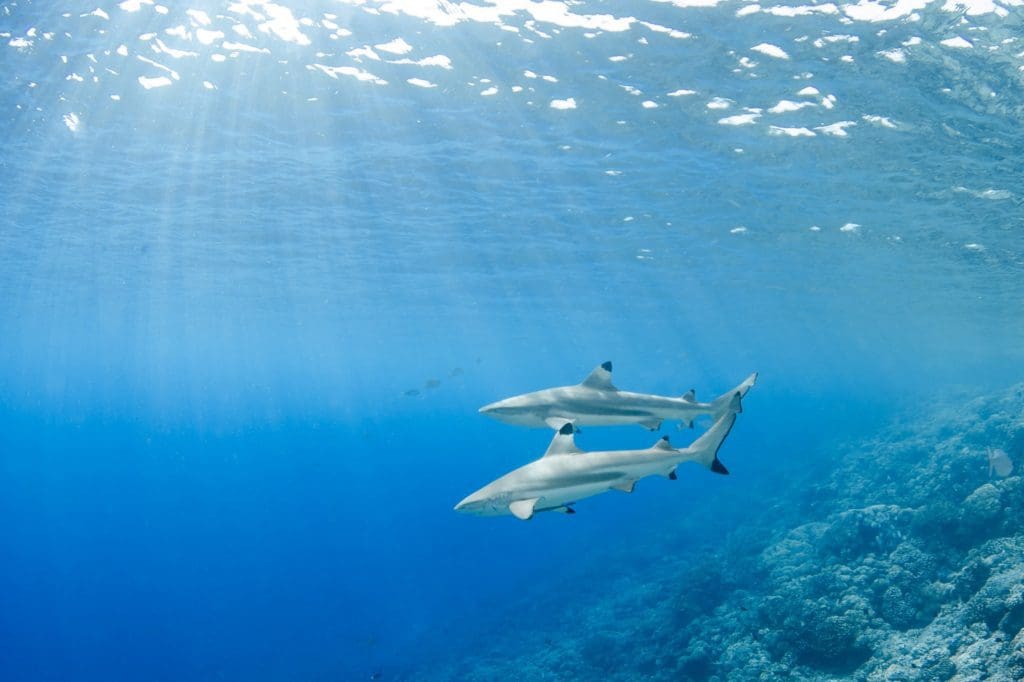
Our first stop was the atoll of Fakarava, a UNESCO Biosphere Reserve and second-largest atoll in French Polynesia. Some of my travel mates and I rented bicycles and visited the local Catholic Church before venturing to a small beach to swim and snorkel. At the outdoor church service, Polynesian women in colorful muumuu’s and straw hats fanned themselves and sang in harmony. At the beach, the clear, turquoise water was the perfect temperature. Small sharks stealthily swam nearby while colorful fish dawdled near the small coral heads in the shallows. Delightful!
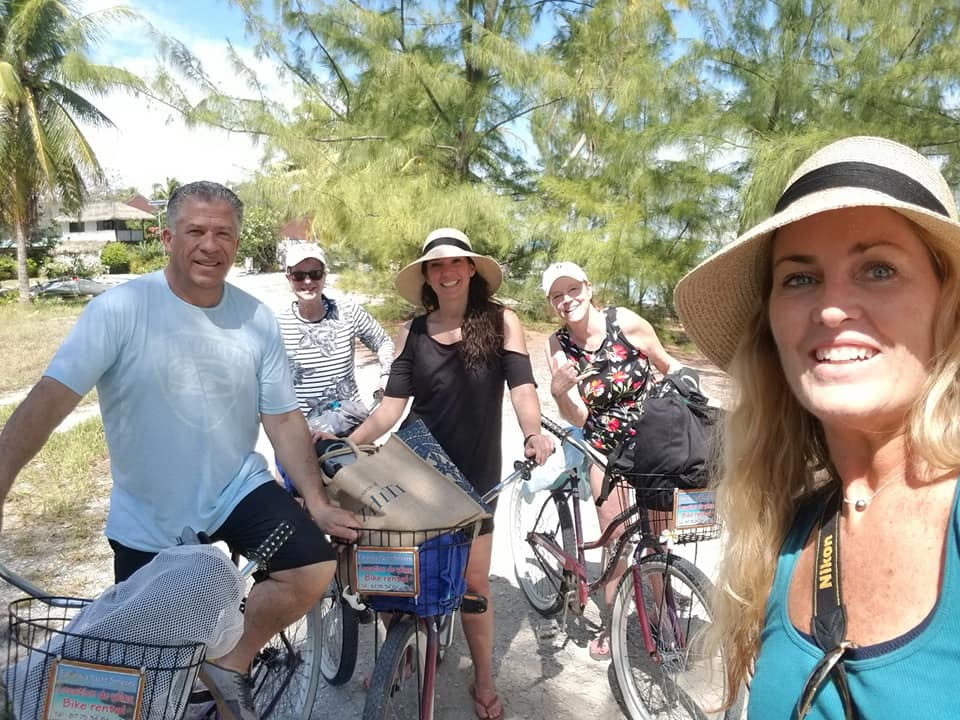
On beautiful Nuku Hiva, the largest island in the Marquesas, passengers disembarked for an included 4×4 vehicle excursion as the ship unloaded cargo. First, we visited the town of Taihoae with its impressive Cathedral and beautiful wood carvings. From there, we headed to the northern coast, passing incredible scenery with imposing rock spires and verdant vegetation. When we reached an archaeological site called Tohua Kamuihei, we enjoyed seeing traditional dances performed by locals on the tohua (ceremonial platform) and saw ancient petroglyphs painted on boulders.
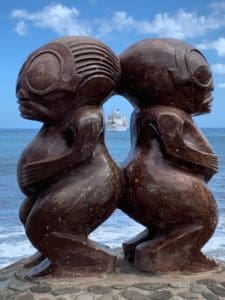 At our next stop on the very arid island of Hiva Oa, an excursion via more 4×4 transports took us to the Te I’Ipona archaeological site. It’s renowned for the stone tiki figures that are some of the largest in Polynesia (behind those on Easter Island). From there, we sailed to Tahuata island. We anchored in Vaitahu Bay and visited the village’s local handicraft center that showcases magnificently carved bone jewelry. The Marquesans are known for their skillful carvings of wood, stone, and bone. Next came Ua Pou island where we did some hiking.
At our next stop on the very arid island of Hiva Oa, an excursion via more 4×4 transports took us to the Te I’Ipona archaeological site. It’s renowned for the stone tiki figures that are some of the largest in Polynesia (behind those on Easter Island). From there, we sailed to Tahuata island. We anchored in Vaitahu Bay and visited the village’s local handicraft center that showcases magnificently carved bone jewelry. The Marquesans are known for their skillful carvings of wood, stone, and bone. Next came Ua Pou island where we did some hiking.
The island of Fatu Hiva is rimmed in cliffs and rock, and our entry at the Bay of Vaipaee was nothing short of amazing. The captain had to “thread the needle” between rock cliffs on both sides in heavy swells! It was absolutely amazing to watch the skilled seamen do their jobs – very treacherous! Once moored, barge boats took passengers to shore, which was an ordeal in and of itself. Massive swells brought the barge up and down with frightening fervor; the seamen had to practically pick up passengers and toss them onto the barge when it was level with the entry door!
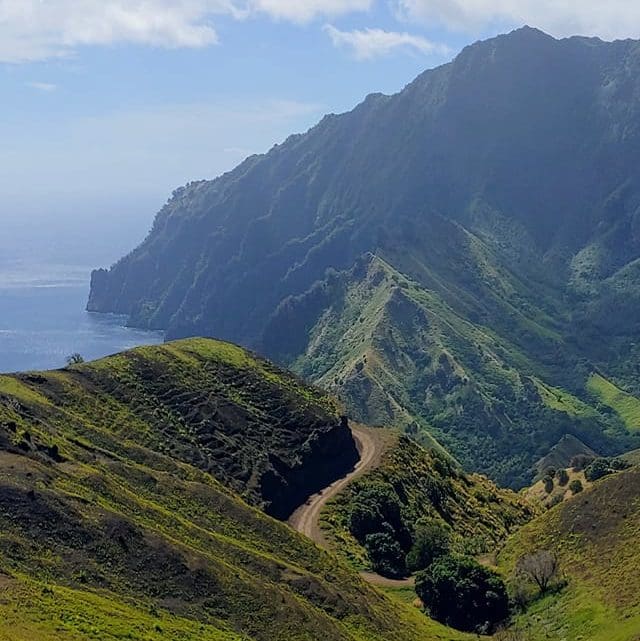 Fatu Hiva revealed many beautiful vistas of the ocean, cliffs and bare landscape on the way to Hokatu village. Wild horses and wild goats meandered along the roadside. The sleepy village features a small handcraft center and sea museum with a gift shop, all showcasing Marquesan carving skills. The island is also home to a botanical garden with many species of indigenous and introduced plants that contribute to everyday living for the Marquesans.
Fatu Hiva revealed many beautiful vistas of the ocean, cliffs and bare landscape on the way to Hokatu village. Wild horses and wild goats meandered along the roadside. The sleepy village features a small handcraft center and sea museum with a gift shop, all showcasing Marquesan carving skills. The island is also home to a botanical garden with many species of indigenous and introduced plants that contribute to everyday living for the Marquesans.
After Fatu Hiva, we sailed away bidding adieu to the mysterious Marquesas, heading southwestward to the Tuamotu Archipelago and Rangiroa, the second largest atoll in the world. Teeming with marine life, Rangiroa is a diver’s paradise and a quiet haven for those seeking to get away from it all. The ship had two more stops before returning to Papeete but sadly, our Tahiti Tiare Agent group was to disembark here and fly back to Papeete and home. Flying from Rangiroa back to Papeete, we had a birds-eye view of the massive Rangiroa lagoon…spectacular!
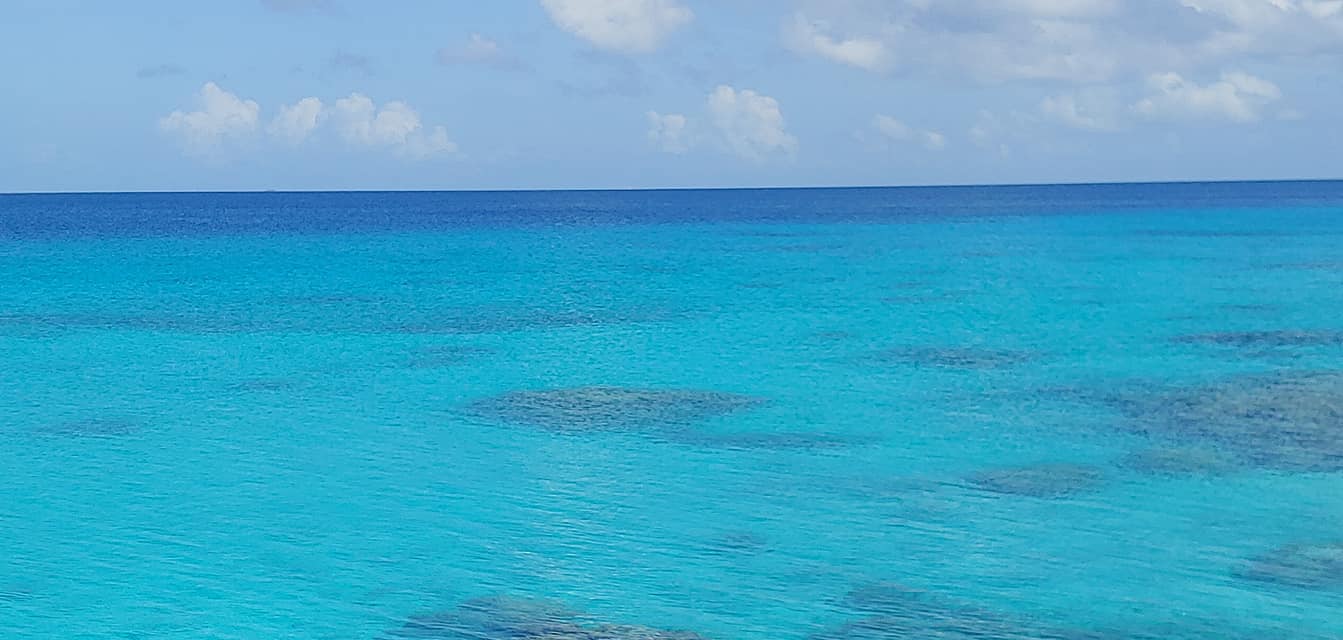
Adventure & Recovery
We had several opportunities to explore different islands by hiking, culminating with a 10-miler. On the arid island of Ua Pou, I ventured out for a 40-minute hike to the white Cross overlooking the sea. It was hot and dusty but good practice for the climax hike in a couple of days.
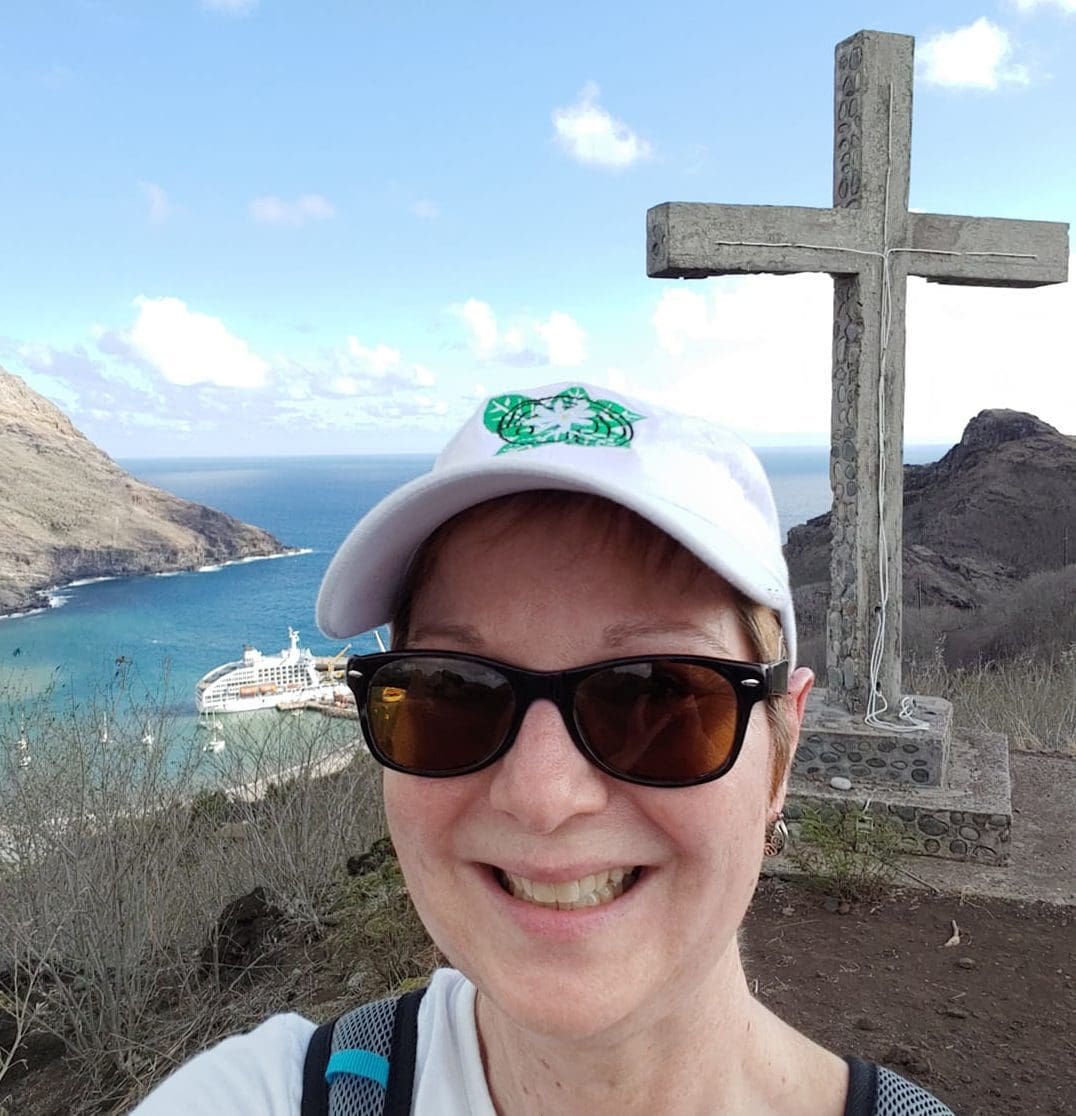
Later, we stopped at a small pensione for a cool drink and internet service. I asked for mango juice, expecting canned juice, but the kind young lady picked up a fresh mango, peeled and cut it, and plopped it into a blender. Voila, I had fresh, energizing mango juice!
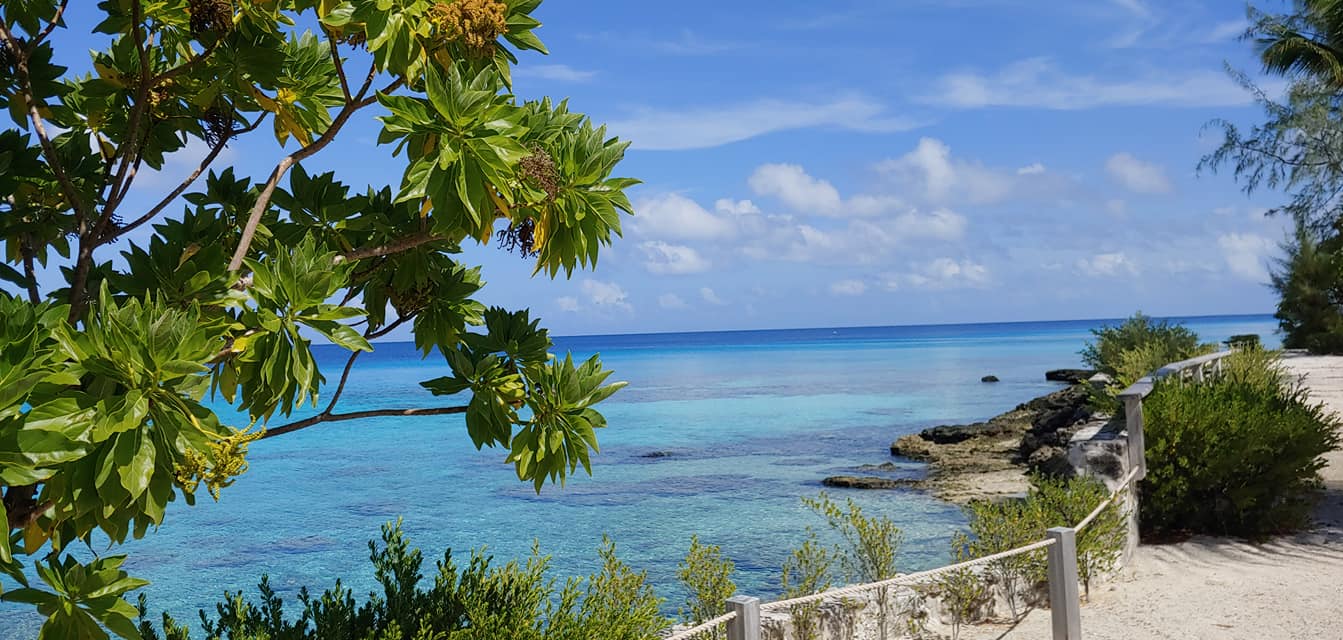 On Hiva Oa, I went on a guided four-mile hike with other passengers where terrain had 15-20 percent inclines leading to stunning views. The hike ended in the graveyard where Belgian singer Jacques Brel and artist Paul Gauguin are buried. Afterward, we visited the Paul Gauguin museum which chronicles the artist’s life on the island and features copies of some of his works produced there. Our guides offered interesting commentary and insight into the rather sad and controversial life of this gifted artist.
On Hiva Oa, I went on a guided four-mile hike with other passengers where terrain had 15-20 percent inclines leading to stunning views. The hike ended in the graveyard where Belgian singer Jacques Brel and artist Paul Gauguin are buried. Afterward, we visited the Paul Gauguin museum which chronicles the artist’s life on the island and features copies of some of his works produced there. Our guides offered interesting commentary and insight into the rather sad and controversial life of this gifted artist.
Back onboard the ship, I had a massage appointment at the small spa. It was a rejuvenating treat, and the sinewy masseuse used an unusual and effective island technique that really helped me relax. I was ready for the 10-mile hike in the morning!
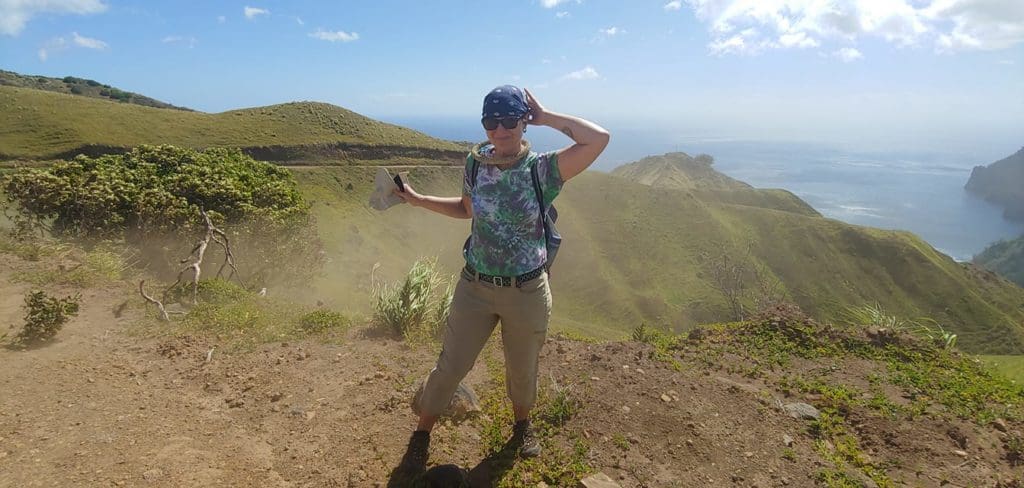
On the big day, I was up for the sunrise. After a hearty breakfast, our group went into Omoa village before the hike. The handicraft center there sold jewelry, carvings, and souvenirs, and showed demonstrations of tapa cloth making and fragrant flower/herb hei (head lei) making. Beginning the hike at the small church, we ascended 15-20 percent inclines for about five miles. It was arduous and hot, with the wind whipping dust on us at many points. At the half-way point, we gratefully feasted on sub sandwiches that the crew had prepared and rested up for the descent.
The views along the way were incredible – the soaring volcanic rock peaks and many shades of green foliage on the caldera were breathtaking. Descending slowly was painful, as muscles and joints began aching, but we finally made it down to Hanavave village where the ship picked us up. It was worth all the effort!
Food & Culture
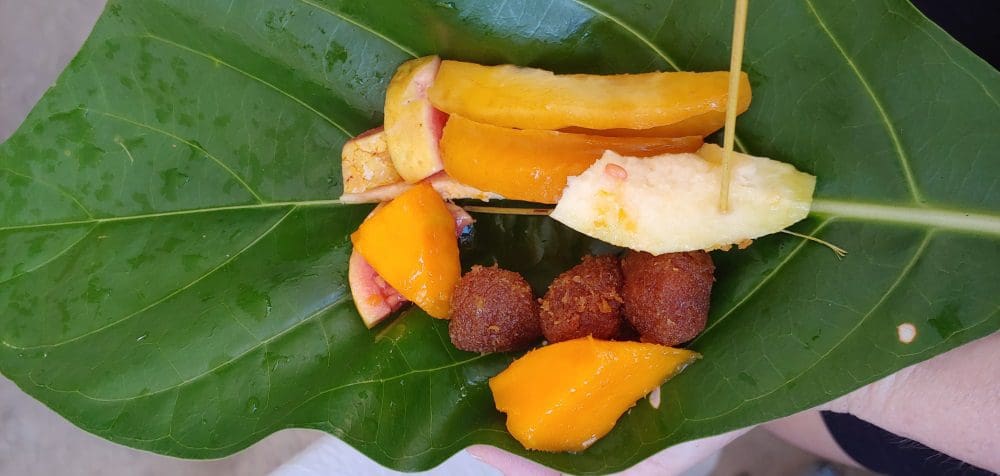
For lunch in the village of Taipivai on Nuku Hiva, we sampled a variety of local dishes, including fish, goat, pork, and tropical fruits and vegetables. That evening dinner onboard was “Plancha Night” (a kind of griddle) with buffet and music under the stars on deck. More music and dancing continued after dinner.
At Ua Pou island’s cultural center, we tasted local fruits and listened to live music. A Haka dance ensued with two of the fiercest warriors we’d seen to date. A lunch buffet of local delicacies followed at Chez Heato’s Restaurant.
On Fatu Hiva, the local Cultural Center Te Tumu maintains a museum of artifacts and depictions of the early life of the Marquesans. We learned about their lifestyle and habits and then had another opportunity to try local staples typical of the Marquesan diet.
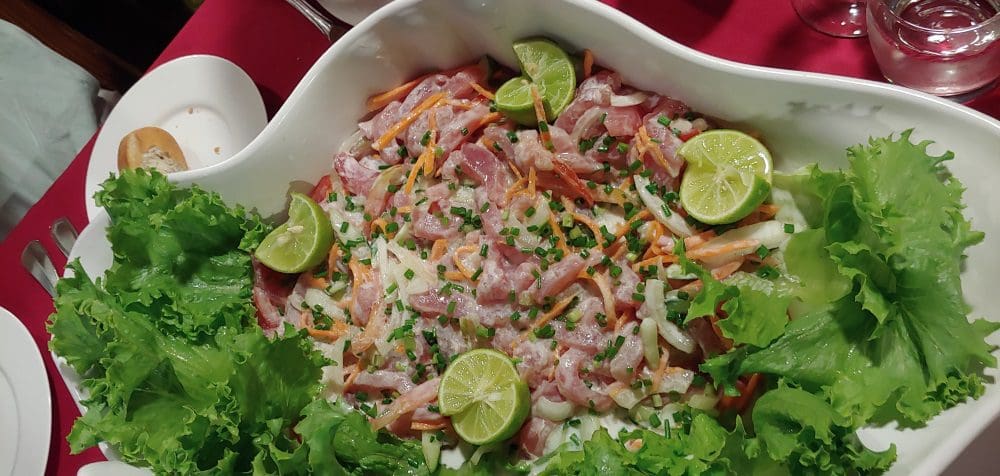
One night for dinner, we feasted on fresh fish caught by four of my trip mates on their fishing expedition the day before. The ship’s chef made us fresh Poisson Cru and broiled fish fillets with vegetables. It was fabulous! For dessert, I was surprised with a birthday cake and a personal Tahitian song and dance celebrating my recent birthday. The perfect ending to a wonderful day!

Another night, the ship had a Polynesian Night with music and dancing along with a lovely buffet dinner. Everyone dressed in their Polynesian finest, and it was the perfect ending to the day!
My Permanent Marquesan Souvenir
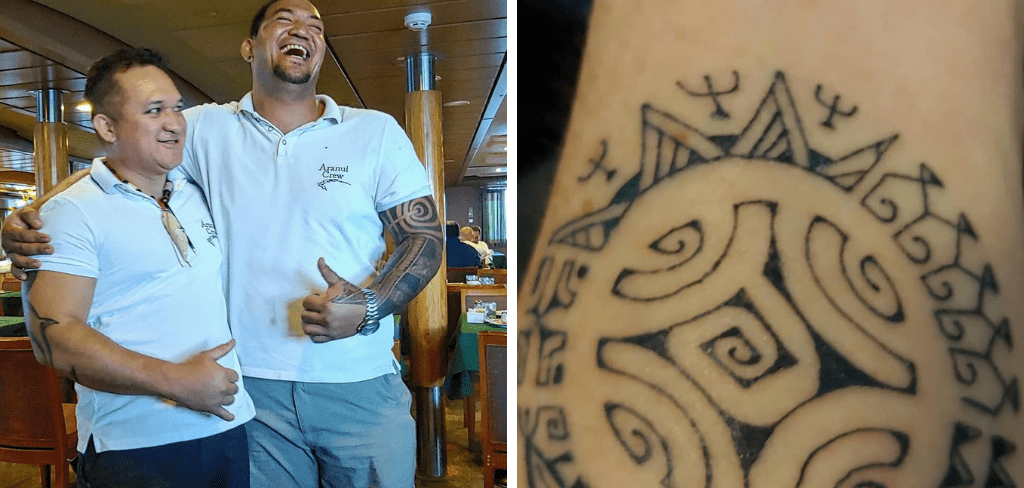
One evening, I met with onboard tattoo artist Eddy, who by day serves as a busboy in the ship’s dining room. Tall and quiet with a killer smile, Eddy is an accomplished tattoo artist taught by his Uncle Moana (who was also our waiter onboard!). I wanted a tribal tattoo for my 60th birthday and conveyed my wishes for a Marquesas Cross with encircling symbols for God, long life, love, family, my journey and strength. I was quite pleased with the results. Every time I look at my permanent souvenir, I remember fondly this incredible trip and the Marquesan people!
Hotel Inspections in Rangiroa
At Rangiroa, we site-inspected the three-star Hotel Maitai Rangiroa, which has modest traditional bungalow accommodations for the more budget-conscious. It was a lovely setting and the property was well-kept and quiet.
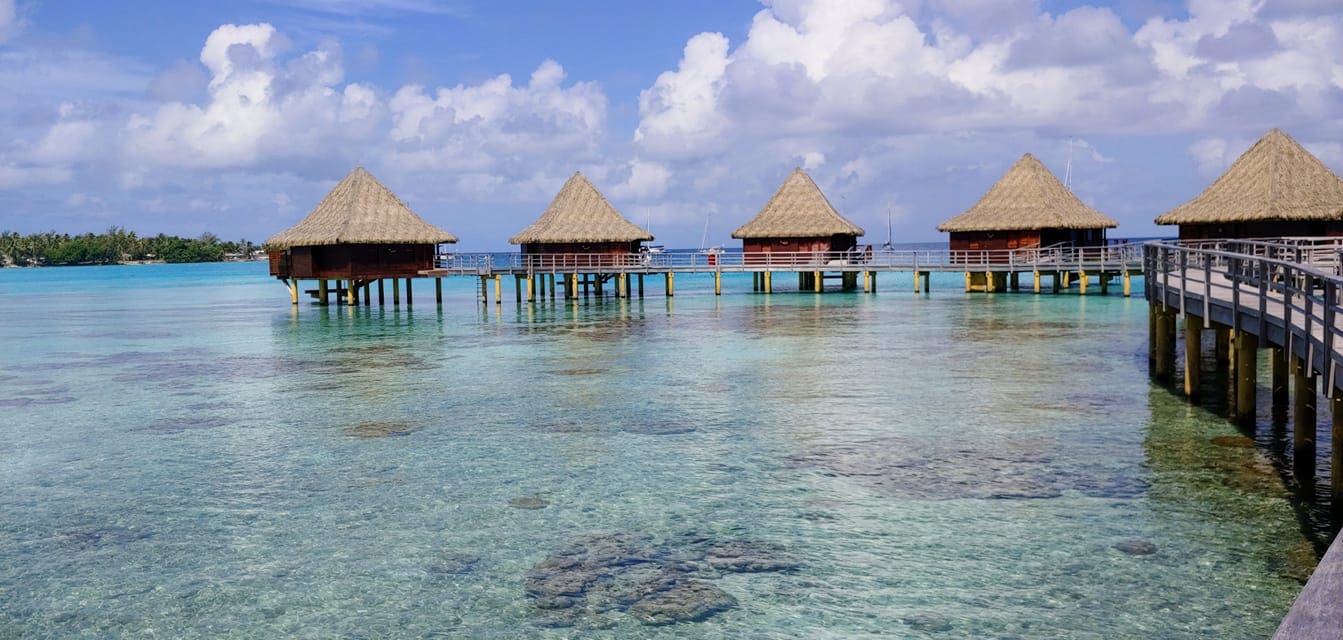
Next, the Hotel Kia Ora Resort was a more luxurious traditional accommodation, with many upgraded comforts. Bungalows were very spacious and had modern amenities without sacrificing island flair and tradition. Attentive waitstaff served our delicious lunch, anticipating our every need. The Kia Ora is very popular for those seeking an atoll experience versus the high volcanic-peaked islands in the Society Islands group. Divers will appreciate the quality of diving options and the exciting drift diving available at Tiputa Pass.
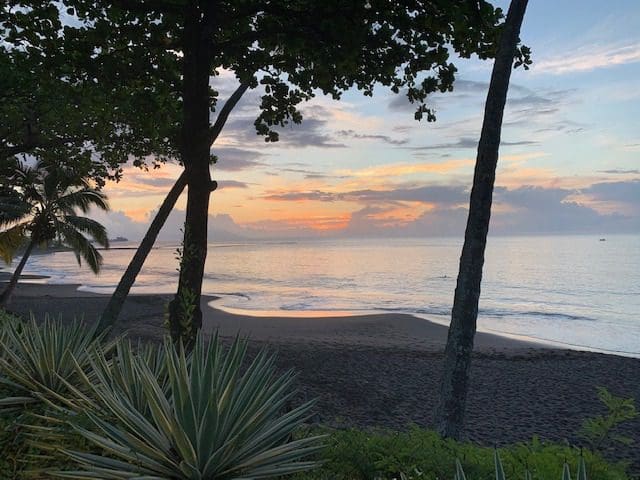
My journey was a memorable adventure, and I learned so much about the culture of the Marquesas Islands. I will cherish the memories of my experiences in these fascinating islands and my stay aboard the Aranui 5!
For help arranging your own discovery of the Polynesian Islands, you won’t find another vacation advisor with more passion, knowledge, and love for the Pacific paradise than Barbi. Contact her to start planning your journey soon.







Leave a Reply